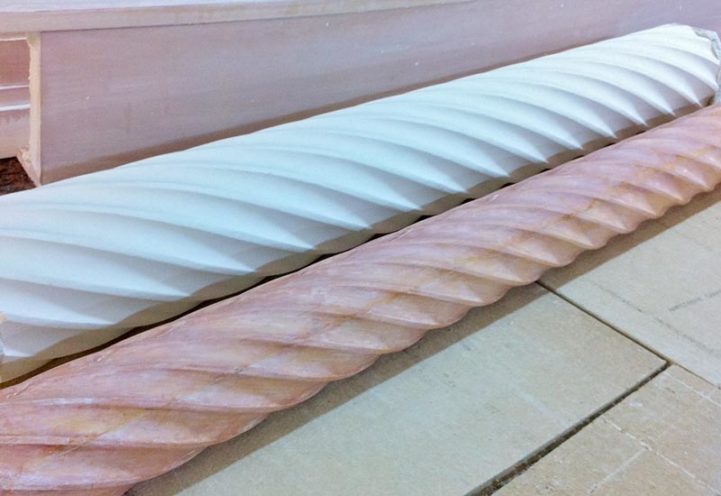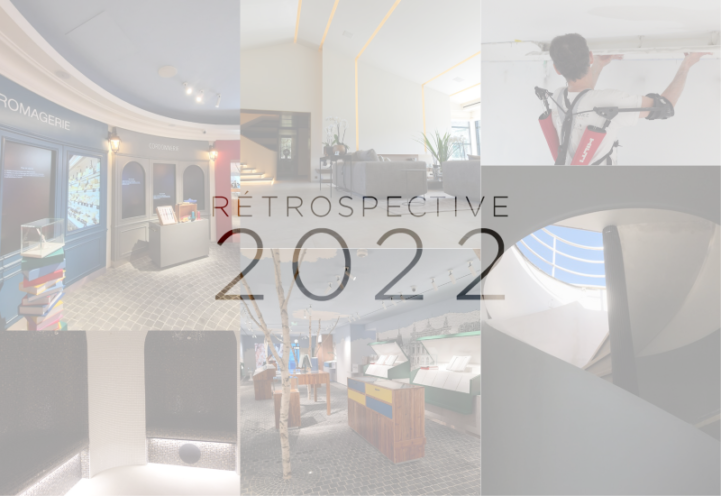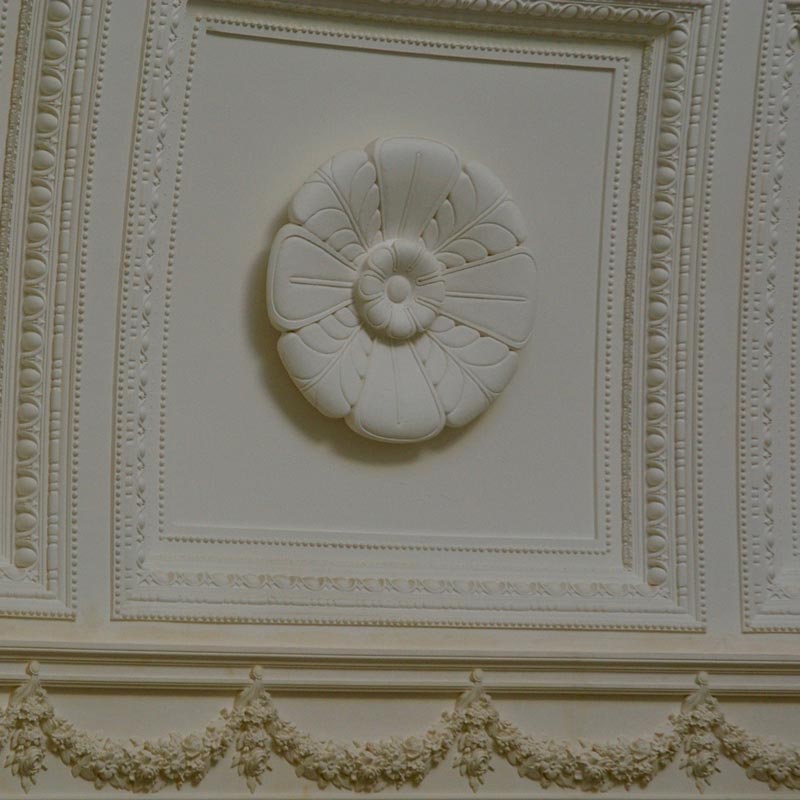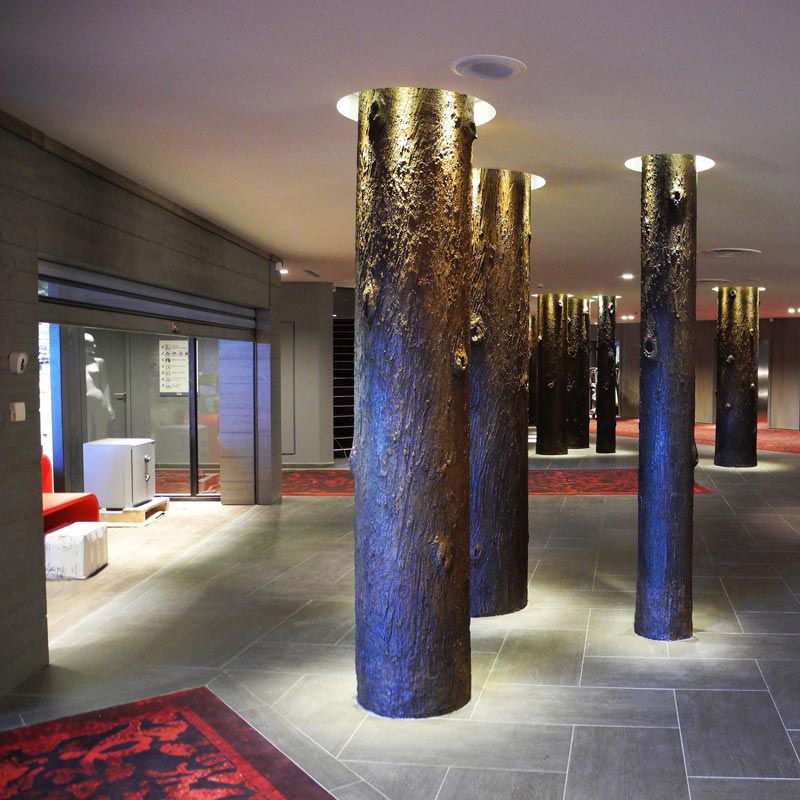Sculpture and fibrous plaster: Two closely related arts
Also known as the “second art”, sculpture allows for the creation of both visual and architectural pieces. This ancient discipline begins with a single block of material that is then shaped to the artist’s will.
Discover the art of sculpting with fibrous plaster
A brief history of sculpture
Sculpture: A work of art produced by carving a hard material, representing either a three-dimensional figure (a statue, bust, etc.) or a relief on a flat surface (low relief, high relief, etc.).
The beginnings of sculpture date back to Prehistory, with sculptures made of terracotta. The ancient Greek and Roman periods marked the first apex of this art with the development of many sculpture techniques for the production of columns,busts and statues made of marble.
It wasn’t until the 12th century that sculpture made its appearance in France, in the field of architecture with the advent of Gothic art. Although sculpture was closely tied to architecture at the start, it expanded into the visual arts in the 19th century, thanks in particular to this famous sculpture by Auguste Rodin.
The Thinker marked a turning point for modern sculpture and the second apex of that art.
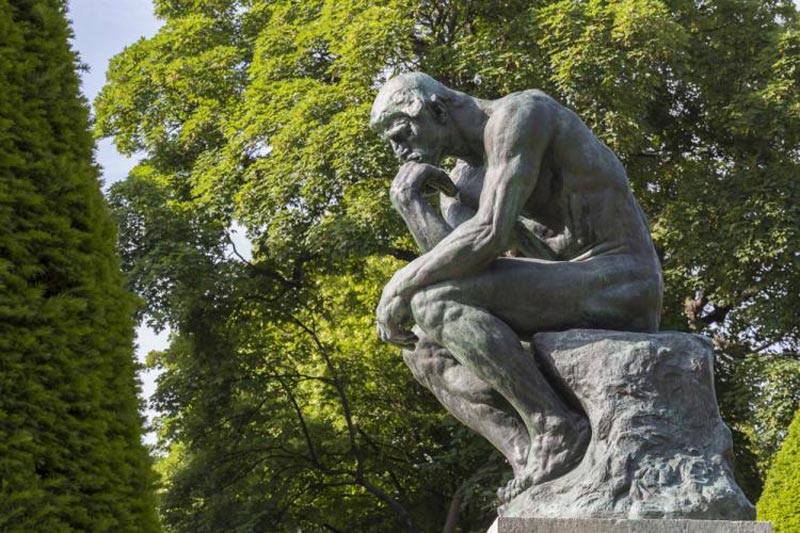
© Photographic Agency of Musée Rodin – Jérome Manoukian
In 1960, the French philosopher Etienne Souriau defined a classification of the arts, assigning sculpture to the second position in his list of the seven arts.
The craft of sculpting
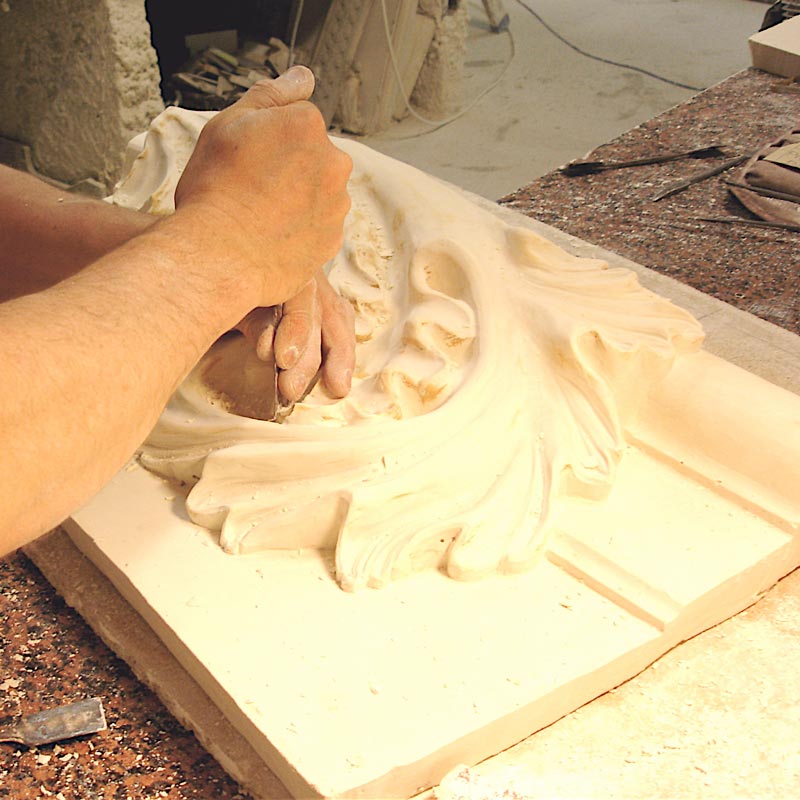
The craft of sculpting is considered an applied art. It involves creating a piece in high or low relief out of a raw material (like stone, wood, marble or metal).
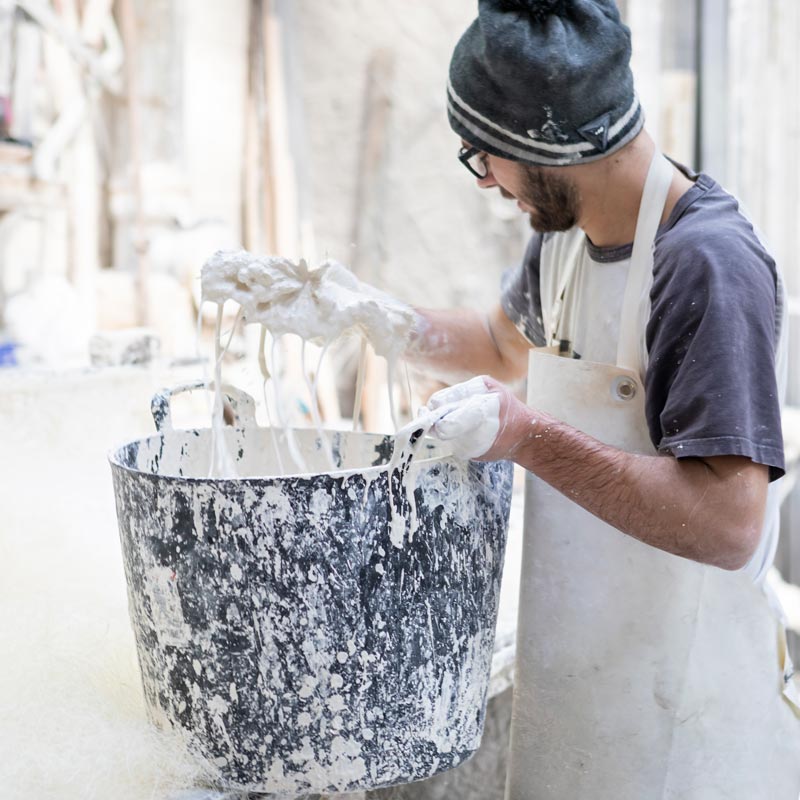
The craft of an ornamental plasterer involves making decorations out of plaster and plant fibre using moulds or zinc templates.
Sculpture and fibrous plaster
Ornamental plasterers use a variety of techniques to create ornamental decorations. Some of the most common techniques include:
MOULDING
RUNNING
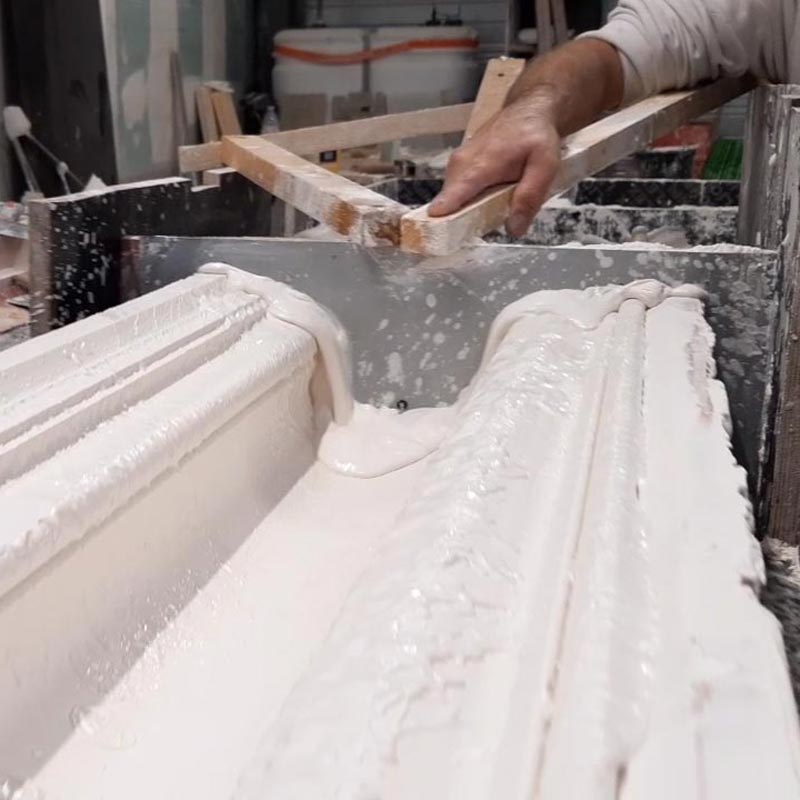
STAMPING
Modelling is considered one of the oldest techniques employed in the discipline of sculpture.
It entails giving form to a soft material by shaping it. Unlike sculpture, which consists of removing pieces of material from a block, this technique offers the possibility of adding material as needed, to create thickness, volume and relief.
After performing these shaping actions, in some cases on the same piece, an ornamental plasterer may then manually work on the more detailed aspects of the ornamentation or bring in a sculptor to do so.
Examples of Rouveure Marquez projects that combine fibrous plaster and sculpture
Examples of Rouveure Marquez projects that combine fibrous plaster and sculpture
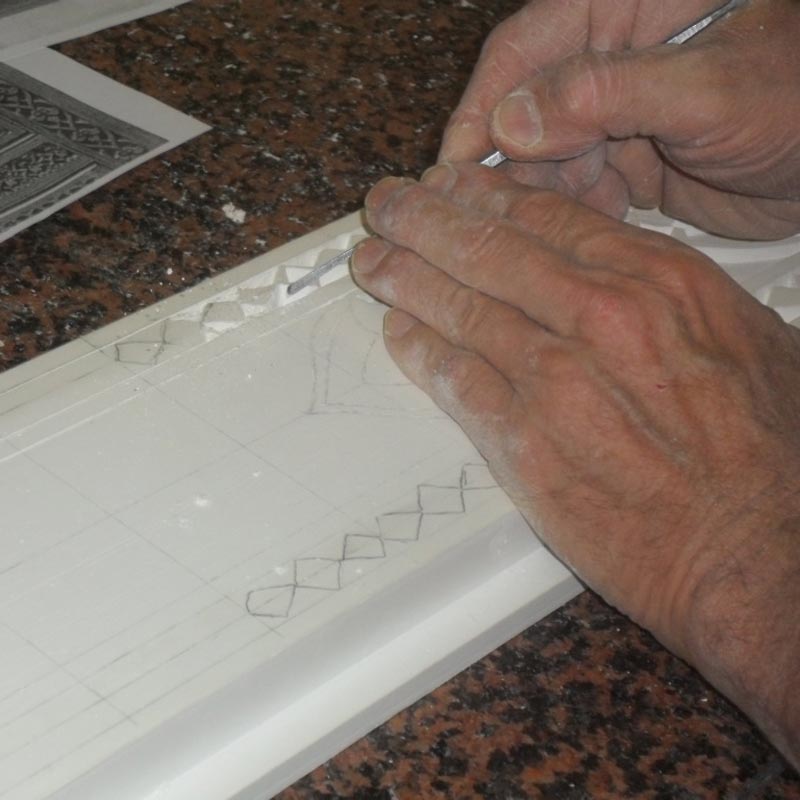
SCULPTING ORNAMENTATION ON A FIBROUS PLASTER CORNICE
To read also
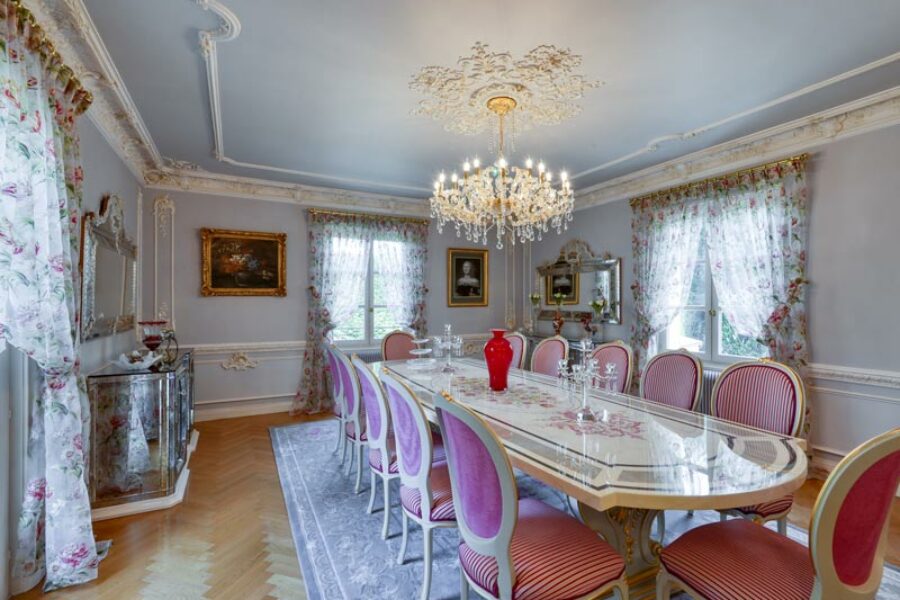
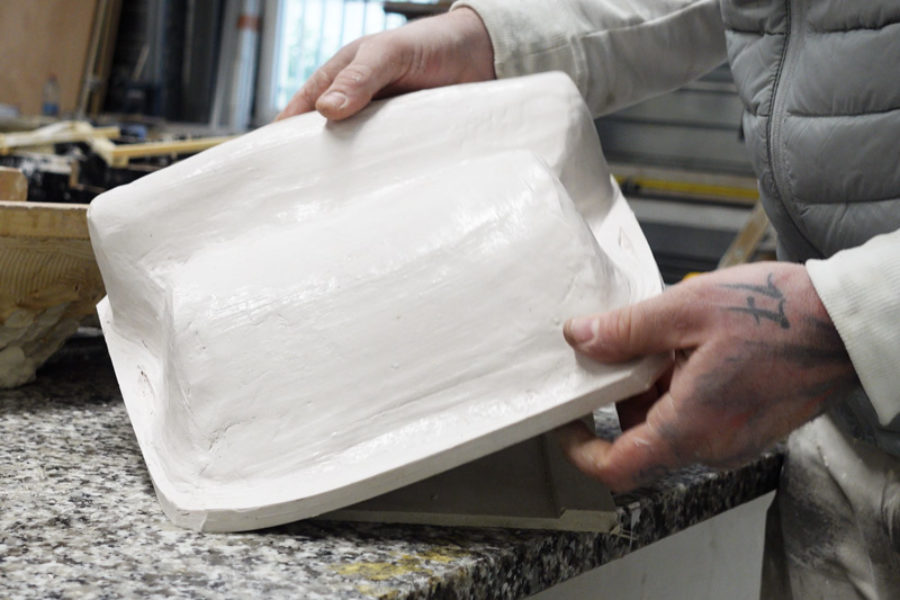
More information


